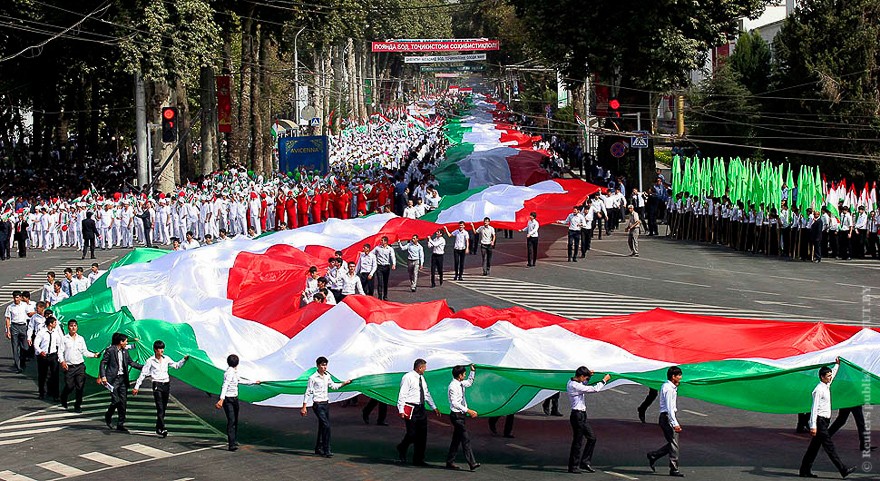NATIONAL FLAG – ORIGIN OF THE TAJIK NATION
November 24 is celebrated as Flag Day of Tajikistan. This day has gone down in the history of important public holidays and allows us to take a confident step in further recognition and approval of the status and place of this state symbol of Tajikistan.
The national flag of the Republic of Tajikistan is a rectangular panel with three colored horizontal stripes: the upper stripe is red, the width is equal to the lower green stripe; The average white stripe is one and a half times wider than one of the colored stripes. On the white stripe, from the point of the stick in the middle of the flag, the symbol of the crown is engraved in gold, and above it, seven stars are depicted in a semicircle. The ratio of the width to the total length of the flag is 1:2.
The flag's crown and stars are placed in a rectangle with a vertical side equal to 0.8 and a horizontal side equal to 1.0 the width of the white stripe. Five-pointed stars are reflected in a circle with a radius of 0.15 and are located in a semicircle with a radius 0.5 times the width of the white stripe.
The height of the crown is 0.55 times the width of the white stripe; it is inclined towards the base in the form of a semicircle with a radius 1.2 times the width of the white stripe. The four arched elements that make up the top of the crown are connected at the center by a white stripe with a radius of 0.2.
The meaning of the colors of the flag of the Republic of Tajikistan originates from the historical sources of this ancient people. Therefore, the national colors of the Tajiks, like other peoples of Orion and Iranian origin, are red, white and green, which have been preserved from ancient times to the present day.
In Aryan (Hindu) societies, the original triple castes were identified and recognized by their special color. In the ancient Indian language, varna- (from the root var- “to cover”) meant both skin color and social class. In ancient Iranian it has both the concept of color and the meaning of social class. The word pre means employment in the Persian-Tajik language comes from this word. In that life, white was the color of priests, red was the color of warriors, and blue was the color of people (farmers and shepherds). Two of these three colors are still found in Iran: red and white. But the third color is green, not blue, and it is closer to the work of farmers.
In ancient times, before the spread of Islam, the traditional classes of society wore clothes that differed from each other in color and reflected the personality of the wearer.
Even today, the red color of the flag signifies pride and splendor, green signifies prosperity and progress, and white signifies light and purity. From the instructions of the sage Abulkosim Firdowsi in “Shоhnoma” it is clear that in determining the spiritual purpose of painting, Koviani acquired an important place in the status of meaningful and effective colors in human thinking.
Thus, today the State Flag as a symbol of Tajik statehood is present in all government, administrative institutions, enterprises and institutions, schools and educational institutions, sports grounds, offices and homes of citizens. It is the duty of every citizen to show respect for the national flag, because the flag is a special symbol of independence, patriotism, sovereignty and a symbol of the existence of the nation.
Teachers of the Department of Foreign Languages: Mananova P.I., Rajabov R.R.

